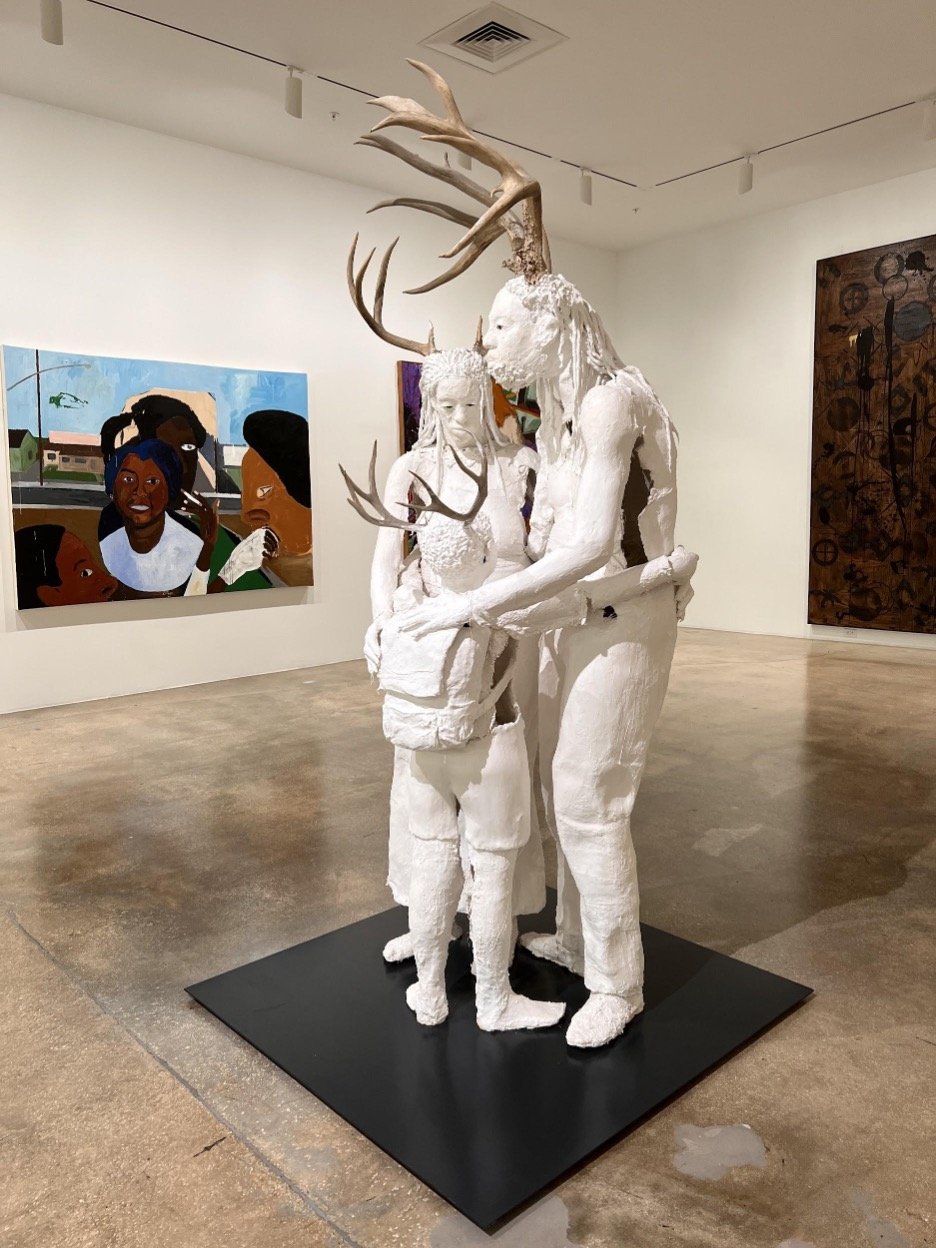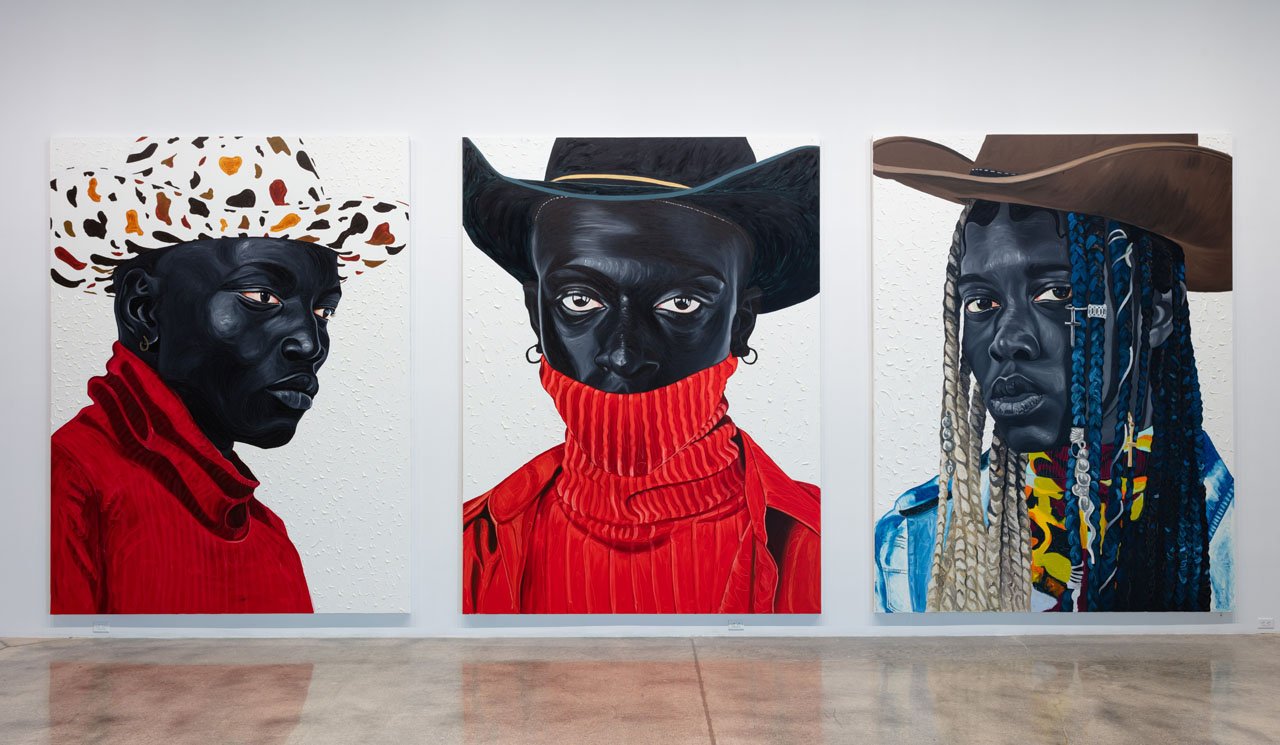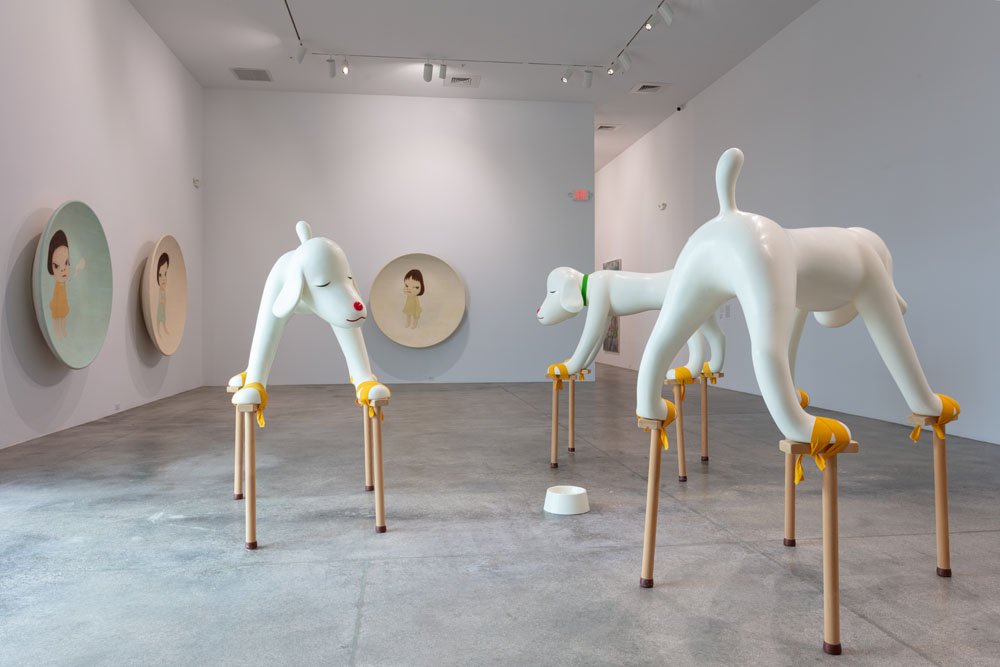Generational Symbiosis @ The Rubell Collection in Miami
Don and Mera Rubell began collecting in the 1960s, initially visiting an artist’s studio and feeling so committed to the work and the practitioner that the piece in question was acquired via a monthly instalment plan. This vital engagement with the artist, as they operate within their own ecosystem, formed a key component of the Rubell’s future collecting and curating ethos.
The artists often talk about older generations who have particularly influenced them and these recurring identities formed a theoretical component of the existing collection. The family is inspired to acquire names that naturally provide a foundation for the work of the younger generation.
Exterior view of the Rubell Museum designed by Annabelle Selldorf. Image courtesy of the Miami Herald.
The Rubell family sees their practice as “expanding their commitment to the older generation [to include] some artists that [they] have only begun to understand through the eyes of the emerging generation–and collect this new generation in as much breadth as possible.” Such a fundamental principle has been recognised throughout their collecting history, since their first acquisitions in the 1960s. From this period, African American art has formed a core opponent of the collection, as Don and Mera recognised the work as consistently being some of the most interesting and relevant of the time.
Mickalene Thomas, Hotter than July, 2005. Image courtesy of the Rubell Collection.
Mickalene Thomas, I Still Love You (You Still Love Me), 2007. Image courtesy of the Rubell Collection.
The year 2005 ushered in a critical mass of emerging artists whose own influences included artists that had featured in the Rubell canon for decades. Existing artists such as Jean-Michel Basquiat, David Hammons, Kerry James Marshall, Lorna Simpson, and Kara Walker were complemented by new and exciting talent from Noah Davis, Wangechi Mutu, Henry Taylor, Mickalene Thomas, and Nina Chanel Abney. This formed the basis of what would be one of the most significant exhibitions in American history, entitled 30 Americans. As of our visit in Spring 2022, it continues to represent the central characteristics of Rubell’s collecting practice.
Yayoi Kusama, Narcissus Garden, 1966-2018.
Upon entering the building, the viewer immediately encounters Narcissus Garden–a sculptural installation work by Yayoi Kusama featuring 1500 mirrored plastic balls arranged down the long gallery nave that stretches the length of the museum. The original work was debuted at the Venice Biennale in 1966 where Kusama stood amidst the balls endeavouring to sell the objects for two dollars apiece. The performance was intended to remind the audience of the unrelenting commercialism that surrounds the art market, but also to suggest a new life and future for the work as it disperses itself beyond the site.
Yayoi Kusama, Narcissus Garden (at the Venice Biennale, Italy), 1966. Image courtesy of Public Delivery.
The art object as a whole is centred around the myth of Narcissus, who falls in love with his own reflection. The story reminds us of the dangers of vanity and self-absorption as the sea of mirrored balls confronts the viewer with their own reflection. They are then encouraged to consider our views of ourselves and how we impact the world around us. Specifically within the Rubell collection, Narcissus Garden playfully reflects the artwork that lives within the gallery. As much as we look at ourselves, our environment is also inherently reflected back, pushing the viewer to consider how they engage with the art in the collection. Simultaneously, based on the installation location and positioning, the visitor experience consists of looking both backwards and forwards in one unifying sphere as they enter and exit the museum. Within the Rubell Collection specifically, Narcissus Garden helps the viewer consider great work of the past and how it might inspire and produce great work of the present and future.
Urs Fischer, Untitled (Branches), 2005.
In the next gallery, Urs Fischer's Untitled (Branches) from 2005 consists of two branches hanging at different heights that move at different speeds in opposite directions. Over time, the wax from the candles drips and draws two circles on the floor that get bigger and bigger and begin to form a Venn Diagram. As the viewer prepares to enter the gallery, which pays homage to the 30 Americans show, Fischer's work very succinctly introduces key themes that drive the spirit of the original show and has echoed throughout Rubell’s collecting practice in subsequent decades. The work poses questions to do with action and reaction, energy, progress, and consequence–all considered forces that result in an inspired youth based on the influence of the establishment that came before. The Venn Diagram further inspires consideration of what the relationship between the two generations might look like and how it will impact artistic practice, together and as individuals.
Nina Chanel Abney, Class of 2007, 2007.
The next gallery features highlights from 30 Americans that very usefully provide the visitor with concrete examples taken straight from the exhibition. 30 Americans is additionally revered as one of America’s most viewed exhibitions, having travelled to twenty museums across the country. The artists featured in the show explore contemporary social issues and personal mythologies through diverse representational strategies. It’s this approach, embraced by the artists through this show, that visibly resonates with other established artists in the collection and the emerging talent that are so influenced by them.
30 Americans of 2008 acknowledged and nurtured the emerging potential of artists including Nina Chanel Abney, and Noah and Karon Davis. In Abney’s work Class of 2007, she attempts to make issues of race and identity as universal as possible. She depicts her classmate as African American and herself as white to subvert the student experience at Parson’s School of Design–where she attended graduate school–and also facilitates a rethinking of how to relate to social issues that aren’t as urgently one’s own.
Whilst Noah and Karon Davis do not explore the roots of theory surrounding identity and the nature of mutual or differentiating experience, their investigation into depicting black people within natural and everyday environments also reminds us of the role race and culture play. Both Abney and Noah and Karon Davis have strong ties to the work of Kerry James Marshall, whose work explores scenes of daily life within the black community, the nature of roles and relationships within racially related or unrelated situations, and what we take away from these scenarios.
The next gallery surfaces themes explored in 30 Americans through the work of the established before introducing work from newer artists positioned carefully amongst the bigger names. This seamlessly positions the two generations together for the viewer to consider the way they relate, like Catherine Opie’s portraiture, which confronts notions of identity both personally and within the roles that are played within a wider culture, and David Wojnarowicz and Jean Michel Basquiat, whose work is hung together in an aesthetically symbiotic manner where the physical similarities between the works allow the themes to converse. Exploring notions of mass media, cartology, and value attribution, Wojnarowicz and Basquiat ask the viewer to consider the institutions we live in, what we take for granted, and whether we should accept the status quo.
Reginald O’Neal, At the Feet of Mountains, 2020. Image courtesy of the Rubell Collection.
Reginald O’ Neal, Amoako Boafo, Otis Kwame Kye Quaicoe, and Kennedy Yanko are four artists that form the core of the emerging talent exhibited this spring at the Rubell Collection. All four artists engage with the central threads running through the exhibition which embrace contemporary social issues through and alongside personal mythologies whilst reflecting evidence of inspiration from the collection’s established artists. All four artists explore a visual representation of the black experience, which is first done through a focus on the banality of the everyday to reveal the beauty in simple realities–such as in Reginald O’Neal’s work. Secondly, there is an almost parodical emphasis on imagery and style that counteracts notions of black identity through traditionally white or Westernised content, style, and other modes of expression.
Works by Otis Kwame Kye Quaicoe. Image courtesy of the Rubell Collection.
Amoako Boafo uses bright colour, fashion, perspective, and paint application to challenge ways of representing the black figure. Otis Kwame Kye Quaicoe uses traditionally non-black symbols such as the cowboy motif to highlight the stark contrast in how figurative imagery is handled in American mass culture. Kennedy Yanko, who has described himself as a “passing” individual with a white mother and black father uses metal and dried gallons of paint in his large-scale sculptural works which conceptually consider physical representation, material, and our individual perceptions of what things are based on and what they are made of. All four emerging artists’ approaches echo nicely in the work of Kehinde Wiley, whose work Sleep hangs in a central gallery and renegotiates the viewer’s ideas of art historical representation, a central theme of Wiley’s practice.
These four emerging talents seem to anchor the exhibition, with the central galleries housing these works. It’s an exciting and impactful curatorial decision to see the newer artists as the focus of such an esteemed collection. The far-end galleries on the other side of these newer names include household names like Keith Haring, Takashi Murakami, and Yoshitomo Nara, who each have a room dedicated to their multicultural pop references. It’s a fun and playful experience without losing the critical lens through which these artists view political debate, cultural representation, and mass media engagement.
Don and Mera Rubell have carved out a hugely provocative and utterly crucial narrative thread for this show and their collecting style overall through the last several decades. Interacting with such iconic names in contemporary art in this space is impactful enough, but tracing how emerging names have been identified and supported in the last decade up until now is what will sustain the canon and support the talent that is so deserving. We can see from 30 Americans the extent to which the emerging names in 2008 such as Nina Chanel Abney and Noah Davis have soared. Amoako Boafo and Kennedy Yanko are also enjoying such success, indicating that the future is bright for our next generation.
Works by Yoshitomo Nara. Image courtesy of the Rubell Collection.
All photos by Kate Fensterstock unless otherwise indicated.
Kate Fensterstock
Contributing Writer, MADE IN BED

























